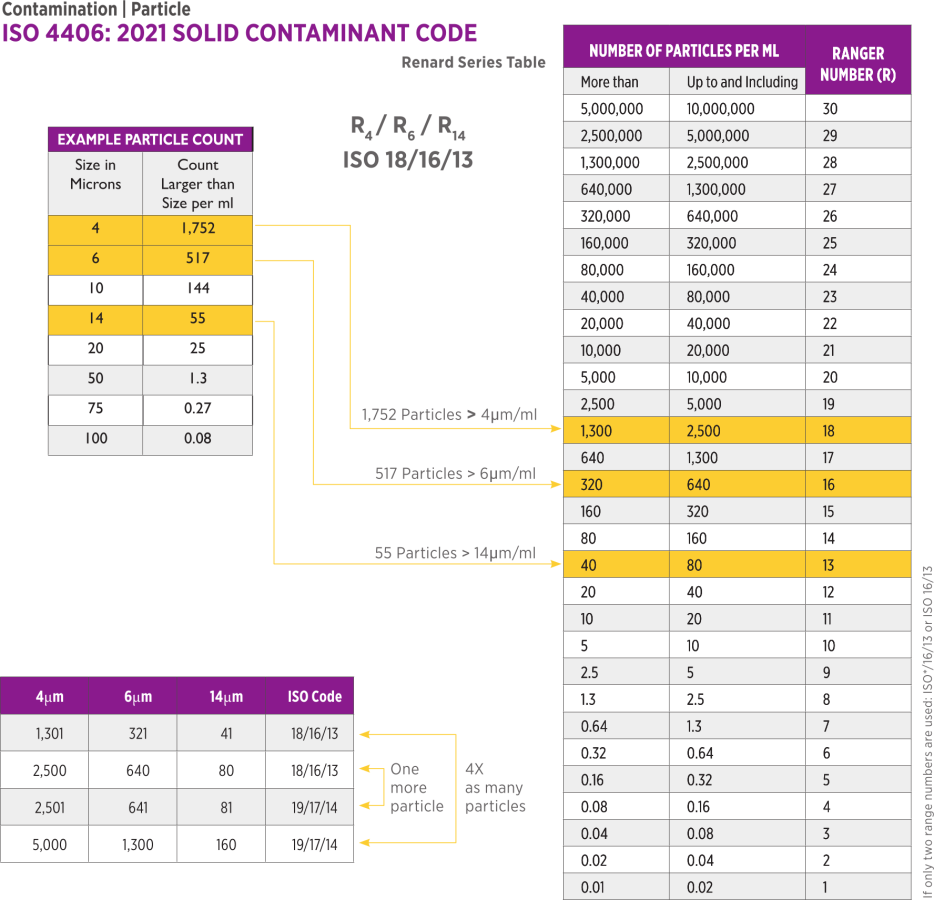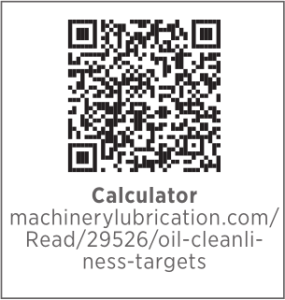Contamination Control Objectives: Cleanliness and Dryness
 With contamination being the leading cause of machine failure, one of the most important sections of a lubrication program is contamination control. Most plants I have visited have spent a lot of time and money creating a defensive machine design. While this is a proactive step to help machines ward off contaminants, this is really just a starting point. Contamination control objectives state how clean/healthy the lubricant inside a machine should be. This is a true measurement of how good or bad your contamination control program is.
With contamination being the leading cause of machine failure, one of the most important sections of a lubrication program is contamination control. Most plants I have visited have spent a lot of time and money creating a defensive machine design. While this is a proactive step to help machines ward off contaminants, this is really just a starting point. Contamination control objectives state how clean/healthy the lubricant inside a machine should be. This is a true measurement of how good or bad your contamination control program is.
Before defining contamination control objectives, it is best to have a good understanding of what contamination means in relation to lubricants. Simply put, contamination is anything that can damage or harm a lubricant or machine, such as solid particles, water and heat. When setting objectives, it is best not to use a broad-stroke, or a one size fits all approach. There are many factors that should be considered, such as machine type, risk of failure, cost of downtime and cost to repair. The objectives for each of these factors may be quite different due to the fact that contamination could affect them in different ways.
Target Cleanliness
ISO 4406:17 is the most widely used reporting standard for fluid cleanliness. This method assigns a code number to particles at three micron levels: 4, 6 and 14. Instead of a report showing the number of particles at each of these micron sizes (which could be in the thousands), the code is used for quick reference; instead of reporting actual particle counts such as 1752, 517 and 55, the code would report 18/16/13.
Cleanliness targets are generally assigned by machine because some machines have tighter tolerances than others. For example, a Target Cleanliness Level for a hydraulic system might be 15/12/10, which would be much lower than a gearbox of the same criticality, 17/14/12. Hydraulics systems with components such as servos are at a far greater risk of failure due to particle contamination than most gearboxes. Another important note to consider when initially setting targets is not to start too low. Targets need to be attainable and can be readjusted over time.

Target Dryness
 If you have been in the lubrication world for any amount of time, you know just how harmful water can be for machines and lubricants alike. Water is not a good lubricant for machine components. Moisture targets are much the same as the cleanliness targets in that you want to stay under the proposed limit. By using a calculator available on the Machinery Lubrication website, the target dryness for a middle-of-the-road criticality hydraulic system came to 100PPM. At the same time, the gearbox with the same criteria would have a target of 300 PPM. With this calculator, you can quickly get cleanliness and dryness targets by answering only six questions.
If you have been in the lubrication world for any amount of time, you know just how harmful water can be for machines and lubricants alike. Water is not a good lubricant for machine components. Moisture targets are much the same as the cleanliness targets in that you want to stay under the proposed limit. By using a calculator available on the Machinery Lubrication website, the target dryness for a middle-of-the-road criticality hydraulic system came to 100PPM. At the same time, the gearbox with the same criteria would have a target of 300 PPM. With this calculator, you can quickly get cleanliness and dryness targets by answering only six questions.
Temperature
While particle and moisture contamination are often monitored, one factor that doesn’t get much attention is temperature. When you have a hundred to a thousand assets running in a plant that is already hot due to the process, there is a good chance your machines are being exposed to high temperatures. But how hot is too hot? This one is a little trickier to set than cleanliness and dryness targets, as there is more data to consider. In general, temperature objectives list the maximum temperature at which a machine or component should run. Remember, viscosity is the single most important property of a lubricant; as temperatures go up, viscosity goes down. If your machines are running hotter than they should, you are most likely not protecting your lubricated components.
It may seem like a big undertaking to set up contamination control objectives on your site. Break it down into small pieces and start with the most critical machines. The life extension of lubricated components can be drastically increased if you can keep the lubricant cool, clean and dry. These objectives can help keep score on how well you are fighting off contaminants at your plant.
